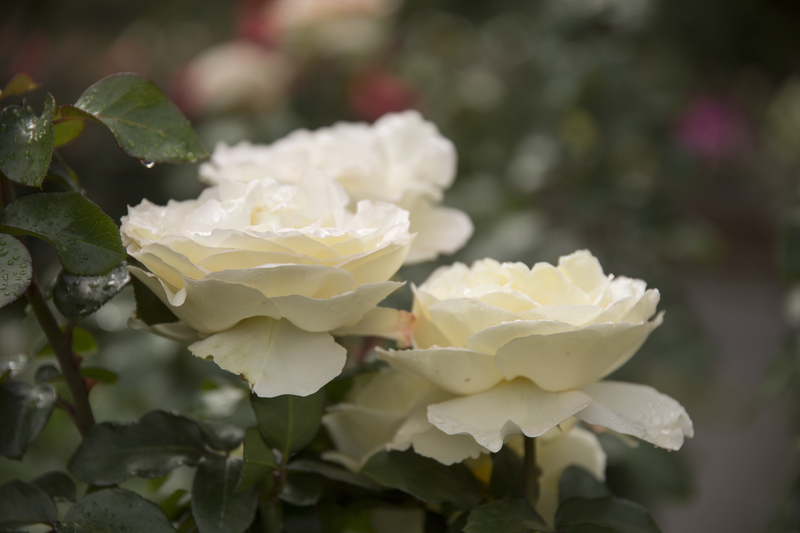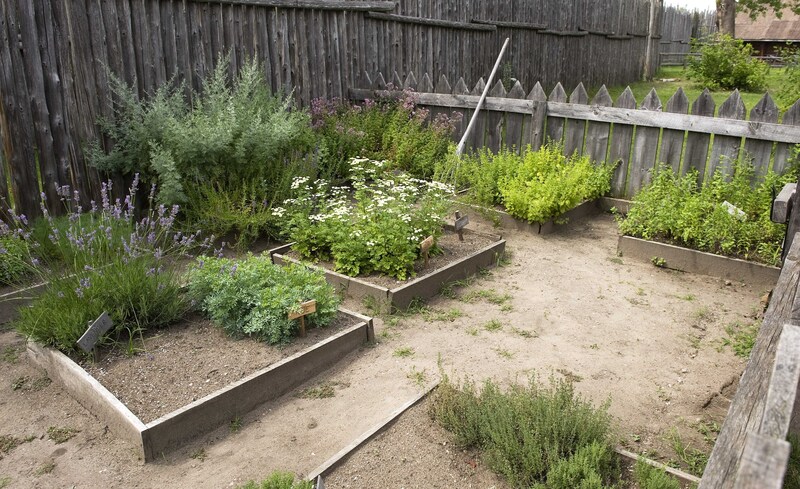Elevate Your Garden: Innovative Hedge Trimming Shapes and Techniques
Posted on 31/08/2025
Elevate Your Garden: Innovative Hedge Trimming Shapes and Techniques
Are you ready to transform your outdoor space from ordinary to extraordinary? Elevating your garden doesn't always require a massive overhaul; sometimes, a creative approach to hedge trimming can make all the difference. Beyond simple rectangles and spheres, innovative hedge trimming shapes and techniques can infuse fresh style, elegance, and personality into your landscape. In this comprehensive guide, we'll explore cutting-edge methods, inspiring shapes, and best practices--inviting you to shape, sculpt, and redefine your green boundaries.
Why Hedge Trimming is Much More Than Maintenance
When most gardeners think about hedges, their first thought is maintenance: keeping borders crisp and plants healthy. But with a creative twist, hedge trimming becomes an art form. Not only does it provide structure and privacy, but it also allows you to make a statement--whether it's an avant-garde topiary, architectural panels, or whimsical cloud shapes.
Modern landscaping trends celebrate aesthetic innovation in hedging as much as practicality. By employing advanced techniques and daring shapes, you foster biodiversity, support pollinators, and craft a unique garden oasis.
Top Reasons to Experiment With Hedge Trimming
- Curb Appeal: Creative edging and shapes instantly elevate your garden's visual impact.
- Personalization: Your garden becomes a true reflection of your style and imagination.
- Biodiversity: Layered or irregular forms support more wildlife than uniform rectangles.
- Creative Expression: Transform simple greenery into living sculptures and breathtaking garden art.

Innovative Hedge Trimming Shapes to Inspire You
For years, the standard for hedge designs was neat, straight boxes or gentle curves. But there's a world of creative possibilities beyond the basics. Let's explore some of the most innovative hedge shapes you can use to elevate your outdoor space.
1. The Cloud Hedge
Cloud pruning (Niwaki in Japanese gardening) is a trending style bringing organic, soft, and sculptural naturalism to gardens worldwide. Hedge plants are shaped into a series of pillowy, cloud-like mounds. This technique blurs rigid borders, invoking a serene, dreamlike ambiance.
- Best Plants: Boxwood (Buxus sempervirens), yew, privet, holly.
- Tips: Maintain variety in mound size and spacing. Use shears for fine shaping.
2. Topiary Animals and Abstract Forms
Show off your playful side by transforming hedges into living sculptures. Classic topiary animals--peacocks, elephants, or rabbits--bring a storybook feel. Abstract shapes (spheres, spirals, cubes) offer modern artistry while still remaining manageable.
- Best Plants: Privet, boxwood, yew (slow-growing and dense foliage are key).
- Tips: Use wire frames as a shaping guide. Trim regularly to maintain detail.
3. Layered Stepped Hedges
Create depth by shaping the hedge in a series of terraces. Each horizontal 'step' is trimmed at varying heights, resulting in a grand, multi-dimensional effect--perfect for both modern and classical gardens.
- Best Plants: Hornbeam, yew, laurel.
- Tips: Mark cutting heights with stakes and string for precision. Start lowest at the front, highest at the back.
4. Geometric and Angled Contours
Classic formal gardens often use crisp, angular lines for a timeless, high-end look. Today's innovation pushes the envelope--try diamond or zigzag patterns, chevrons, or triangular sectioning along paths.
- Best Plants: Boxwood, hornbeam, yew.
- Tips: Use templates or wooden guides for straight lines and uniform angles.
5. Living Fences and Screens with Windows or Arches
Why not add an element of surprise and connection? Trimming 'windows' or archways into a hedge segment creates enchanting glimpses through to other garden rooms. Arched openings can beautifully frame statues, fountains, or vistas.
- Best Plants: Beech, hornbeam, privet.
- Tips: Carefully plan the shape and height; reinforce larger openings with simple supports until established.
6. Textured or Multi-Species Hedges
For a more naturalistic, eco-friendly effect, consider planting and shaping mixed-species hedges. Trim using staggered heights and shapes, showcasing different foliage colors and textures.
- Best Combinations: Hawthorn, dogwood, hazel, wild rose.
- Tips: Allow some sections to flower or fruit for wildlife benefit, then trim after the season.
Innovative Hedge Trimming Techniques: Tools, Tips, and Timing
The secret to mastering hedge shaping is as much about technique as imagination. Here's how to achieve clean, creative, and healthy results with minimal fuss.
Perfect Tools for Precision Shaping
- Manual Shears: Ideal for detail work, finishing, and touch-ups.
- Electric or Battery Trimmers: Essential for large or long hedges, and straight cuts.
- Topiary Shears: For artistic shapes and fine, intricate sculpting.
- Loppers/Saws: Necessary for removing thicker old wood and shaping structure on mature hedges.
- Templates and Frames: Metal or wooden guides are invaluable for geometric or animal shapes.
Key Hedge Trimming Techniques for Next-Level Results
- Start with the Basics: Always remove dead, diseased, or crossing branches before shaping.
- Work from Bottom Up: Begin cutting at the base to maintain a strong foundation and promote dense lower growth.
- Maintain Tapered Sides: Make the base of the hedge wider than the top for stability and sunlight exposure to all leaves.
- Use Steady Strokes: For precise shapes, take small regular cuts rather than aggressive removals.
- Step Back Often: Frequently assess your work from different angles; stand back to see the overall shape developing.
The Optimal Timing for Hedge Trimming
Timing is crucial to maintain plant health and ensure robust regrowth:
- Evergreens: Trim lightly in late spring or early summer. Avoid hard pruning late in the season (to prevent winter damage).
- Deciduous Hedges: Best shaped in late winter or early spring before new growth starts--except for flowering types (trim after blooming).
- Fast-Growing Species: May need light trims multiple times per season for topiary or complex shapes.
Best Practices for Healthy, Beautiful Hedges
No matter how creative your hedge trimming, following these best practices ensures lasting beauty and vigor:
- Clean and Sharpen Tools: This prevents disease spread and ensures a smooth, clean cut.
- Feed and Water Hedges: Encourage lush growth with compost or balanced slow-release fertilizer. Mulch to preserve soil moisture and suppress weeds.
- Check for Pests and Diseases: Promptly treat issues to keep hedges healthy and shapely.
- Encourage Wildlife: Allow flowering or berry sections for birds, bees, and beneficial insects.
- Rotate Shapes: With multi-season interest in mind, try altering forms or adding new elements every few years.
Creative Hedge Trimming Shape Ideas: Real-World Inspiration
- Maze-Like Patterns: Hedge labyrinths or intricate paths offer adventure and charm for large gardens.
- Garden Room Dividers: Use tall, undulating shapes to separate entertaining spaces, vegetable beds, or play zones.
- Blended Borders: Alternate geometric panels with cloud-sculpted sections for a dynamic visual rhythm.
- Modern Minimalist Hedges: Crisp lines and sharp angles pair perfectly with contemporary outdoor furnishings and hardscapes.
- Spirals and Swirls: Create rhythmic movement along walkways with sculpted twisting forms.
Expert Tips for Beginners
- Start Simple: Limit your first attempt to basic shapes before progressing to more complex forms.
- Draw Your Design: A sketch helps visualize how new shapes will fit into your existing landscape.
- Be Patient: Trust the process--dense, complex shapes may take several seasons to perfect.
Plant Selection: Choosing The Right Hedge For Creativity
Not all hedging plants respond equally well to artistic trimming. For innovative hedge designs, choose species with small leaves, dense branching, and slow-to-moderate growth.
- Boxwood (Buxus): The traditional topiary favorite--excellent for small intricate shapes.
- Yew (Taxus): Ideal for geometric forms; slow growth makes it easily maintainable.
- Privet (Ligustrum): Fast-growing, great for larger or more experimental creative hedging.
- Hornbeam (Carpinus betulus): Keeps leaves into winter, perfect for architectural shaping throughout the year.
- Beech (Fagus sylvatica): Stunning autumn color and effective screening in larger spaces.

Frequently Asked Questions: Innovative Hedge Trimming Shapes and Techniques
Is topiary difficult for beginners?
It depends on your ambition! Simple shapes (balls, cubes, spirals) are quite achievable. Use frames and take your time--many topiary forms develop over several seasons.
Which tools make a difference for intricate shapes?
Short, sharp topiary shears and handheld secateurs offer maximum precision. For geometric hedges, straight edges, string lines, or wire mesh frames help create crisp lines.
Can innovative trimming damage my plants?
Overzealous pruning--especially late in the season--may stress or injure plants. Go gradually, especially with mature hedges. Always follow species-specific recommendations for trimming times and styles.
How often should I trim my hedges?
Frequency depends on species and ambition:
- Formal, geometric shapes: Every 2-6 weeks during the growing season.
- Naturalistic or mixed hedges: Once or twice per season is usually sufficient.
Elevate Your Garden: Step Into Creative Hedge Trimming
Innovative hedge trimming isn't just about neat boundaries--it's your chance to make gardening an adventure. Whether you're drawn to soft cloud forms, playful topiary animals, bold geometric lines, or living green rooms, every trim brings you closer to a bespoke, inspiring garden landscape.
With the right plants, tools, and creative mindset, you can elevate your garden into a living work of art.
Ready to Get Started?
- Visualize your dream shapes and map out your garden layout.
- Invest in quality tools for precision and ease.
- Experiment boldly, trim mindfully, and enjoy the process--your unique hedge designs will reward you for years to come.
For more inspiration, tips, and guides on innovative hedge trimming shapes and techniques, keep exploring and unleash your garden's true creative potential!

